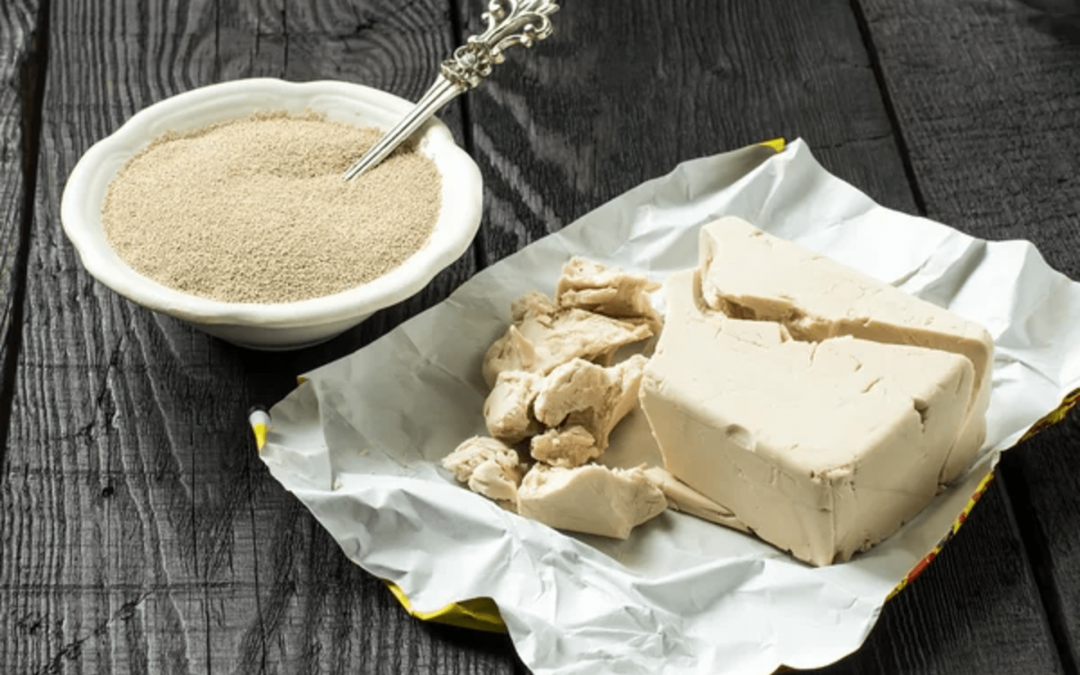Cannabis, an age-old companion to humanity, has thrived and adapted alongside us for countless millennia. Diverse civilizations across the globe recognized its multifaceted potential, utilizing its seeds for nourishment, fibers for crafting textiles and various materials, and its buds as a potent medicine and psychoactive substance during sacred rituals. The remarkable benefits of cannabis captivated our ancestors, and today, it maintains its invaluable status.
The medicinal prowess of cannabis was an ancestral certainty, ingrained in the knowledge of our forebears. While the Western world seems to have recently rekindled its fascination with cannabis medicine, the East has long embraced and meticulously documented its uses for thousands of years.
Embark on an enlightening journey through the narrative of cannabis, tracing its origins and observing its global dissemination. Delve into the annals of various cultures, each with their unique relationship to the plant. Discover the profound significance cannabis held for ancient civilizations and how its relevance endures in the present day.
Origins of Marijuana
Have you ever wondered where the remarkable plant we know as weed first took root? It is believed that cannabis, also known as marijuana, originated in the vast expanses of Central Asia, encompassing regions such as China, Mongolia, Russia, Kazakhstan, Pakistan, and India. As early humans transitioned to an agrarian lifestyle nearly 10,000 years ago, they began cultivating cannabis around 5,000 to 6,000 years ago. With changing climates and human migrations, cannabis found itself carried far and wide by our ancestors, spreading its influence across the globe.
From its Central Asian birthplace, cannabis gradually made its way to the Middle East, the eastern coast of Africa, and Southeast Asia. Centuries later, it eventually found its place in Europe and the Americas, completing its worldwide journey.
This journey of dispersal gave rise to distinct varieties of cannabis known as landraces. These unique strains, like the renowned Hindu Kush originating from the Kush Mountains of Pakistan and Afghanistan, bear the imprints of their specific regions’ climates, geography, soil composition, and environmental factors.
Medical Cannabis in China
The ancient Chinese civilization stands as a testament to cannabis’s medicinal potential. The oldest medical text known to humankind, the Pen-ts’ao Ching, gained prominence during the late Han Dynasty in the 2nd century CE, although it drew from ancient sources. It recounts the wisdom of Emperor Shen-Nung, hailed as the father of Chinese medicine, who recognized cannabis’s therapeutic benefits for over a hundred ailments. The Pen-ts’ao Ching represents the earliest documented record of cannabis as a medicinal herb, highlighting its healing properties and emphasizing its safety for use.
Within this ancient Chinese medical text, the concoction of female cannabis flowers is referred to as “ma-fen.” Rooted in the principles of yin and yang, Chinese medicine viewed cannabis as a medicine that restored yin energy, proving effective against conditions such as gout, rheumatic pain, constipation, malaria, and gynecological disorders. Intriguingly, linguistic analysis reveals that medicinal cannabis even influenced the formation of certain compound words in the Chinese language, including terms for “numb,” “narcotic,” and “paralysis,” all derived from the word “má,” meaning “hemp.” These words mirror the effects cannabis can induce.
In 2019, an astonishing discovery shed further light on ancient cannabis usage in China. Archaeologists unearthed wooden braziers dating back to approximately 1500 BCE in the Eastern Pamir region. Found within a cemetery, these braziers, wooden devices with deep wells, contained charred residue carrying traces of cannabinoids. It is believed that cannabis and heated rocks were placed inside the braziers, with individuals inhaling the resulting smoke during burial ceremonies. Additionally, during the Han Dynasty (200 BCE – 220 CE), historical documents mention the pain-relieving properties of cannabis based on the work of the renowned surgeon Hua Tuo. Hua Tuo’s innovative approach involved using “máyóu,” an oil infused with cannabis resin, datura, and wine, enabling him to perform surgeries without causing undue suffering to his patients.
Cannabis in India
Step into the mystical world of cannabis in India, where its profound spiritual and medicinal properties have been cherished for centuries. The Atharva Veda, a revered collection of sacred Sanskrit writings dating back to at least 800 BCE, honors cannabis as one of the five sacred plants. Within its verses, cannabis emerges as a divine gift, intertwining its healing capabilities with religious and ritualistic practices, serving as a gateway to happiness, joy, and liberation.
Delving deeper into the annals of ancient Indian wisdom, we encounter the Susrita Samhita, a foundational text of Ayurvedic medicine from around 800 BCE. This esteemed document unveils the vast array of healing properties inherent in the cannabis plant. Ayurveda recognized cannabis as a versatile remedy, offering relief across a wide spectrum of ailments. From stimulating the appetite to relieving pain, acting as an anesthetic, anticonvulsant, and even combating parasitic infections, cannabis held a revered place in the ancient pharmacopoeia.
Among the myriad forms of cannabis preparations, one stands out as both a remedy and a symbol of divinity – Bhang. This concoction, made by blending cannabis with warm milk, nuts, and spices, served as a common elixir for various ailments. It is said to have been a favorite food of the deity Shiva, embodying its powerful medicinal properties. Bhang gained particular recognition for its remarkable ability to alleviate anxiety, and to this day, it is consumed in sacred contexts such as during the vibrant Holi festival, infusing the celebration with a sense of spiritual connection.
Furthermore, cannabis found its expression in other medicinal and sacred preparations. Ganja, the act of smoking the female flowers, and charas, rolled balls of hashish intended for smoking, held significant roles in ancient practices. Even today, these forms of cannabis continue to be discreetly consumed, embodying the enduring legacy of India’s profound connection to the plant.
Shemshemet in Ancient Egypt
In ancient Egypt, historians reveal that cannabis, originating from Central Asia, was introduced to the region. Medical documents written on papyrus around 1550 BCE highlight its therapeutic properties, particularly as an anti-inflammatory agent and a childbirth aid. The Egyptians employed various methods of cannabis administration, including oral ingestion, topical application to the skin, rectal and vaginal administration, and even eye drops.
The term “shemshemet,” frequently encountered in Egyptian hieroglyphs, is believed by many scholars to refer to a versatile plant used for both rope-making and medicinal purposes, most likely hemp. Archaeological evidence of this plant has been discovered in the tombs of pharaohs such as Akhenaten (or Amenhotep IV) from around 1335 BCE and Ramses II, who lived between 1303 and 1212 BCE.
The Scythians of Central Asia
Moving to Central Asia, the Scythians were nomadic people inhabiting the region between the Black Sea and Siberia from approximately 600 BCE to 400 CE. Ancient Greek historian Herodotus described a practice called the “Scythian vapor bath,” where individuals would sit inside a tent and place heated rocks infused with cannabis into wooden braziers. This account may be the earliest recorded instance of a hot box. Additionally, two gold bongs dating back to around 600 BCE were discovered in Central Asia and are believed to belong to the Scythians.
In the Altai Mountains of southern Siberia, a mummified female body dating to around 500 BCE was found. Known as the “Siberian Ice Maiden,” she was buried with a pouch containing cannabis. A modern MRI scan revealed that she had breast cancer, leading scientists to theorize that cannabis may have been utilized for medicinal purposes in her case.
Cannabis in Greece and Rome
Cannabis played a significant role in ancient Greece and Rome, serving various purposes such as rope-making and sail production. The earliest recorded evidence of medicinal cannabis use among the Greeks can be found in the De materia medica, written by physician Dioscorides in the first century CE. Dioscorides highly praised the plant for its effectiveness in treating earaches, providing detailed instructions on how to prepare cannabis medicine using young, green seeds to extract a juice.
Shortly after Dioscorides, Pliny the Elder included a discussion on the medical applications of cannabis in his work Naturalis Historia, written in 77 CE. Pliny highlighted its use in alleviating joint pain, gout, and burns.
During the second century CE, Galen, the physician to Roman Emperor Marcus Aurelius, cautioned against excessive consumption of hemp seed cakes, a popular item at Roman banquets. While these cakes were known to induce relaxation, hilarity, and euphoria, Galen warned of their potential drawbacks, including increased thirst, sluggishness, and difficulties with digestion.
Hashish in the Arab and Persian Worlds
In the Arab and Persian worlds cannabis played a significant role in traditional medicine and cultural practices. Arabic scholars such as al-Mayusi and al-Badri, living during the 10th and 15th centuries CE respectively, recognized the effectiveness of cannabis in treating epilepsy. Similarly, Avicenna, a renowned Persian scholar, acknowledged the therapeutic properties of cannabis in his influential work, the Canon of Medicine, published in 1025 CE. Avicenna highlighted its benefits in relieving pain, treating conditions like gout, edema, infectious wounds, and eye inflammation.
The Persian scholars demonstrated a sophisticated understanding of marijuana, acknowledging its biphasic effects, where small amounts of THC can produce positive outcomes while larger doses may have different, potentially adverse effects. Interestingly, it is believed that the first cannabis edible, mahjoun, originated in Morocco. Mahjoun is a delectable sweet treat filled with hash. Traditionally, it consists of a paste made from figs, dates, and hash, covered with an array of flavorsome ingredients such as nuts, honey, rosewater, sea salt, turmeric, cardamom, ginger, cinnamon, and lavender.
Cannabis in Africa
Cannabis has a fascinating history in Africa, with its introduction believed to have occurred during the 1400s through Arabic traders originating from India and the Middle East. East Africa became a gateway for the plant’s arrival, spreading its influence throughout the continent. Notably, cannabis became deeply ingrained in the culture of enslaved Africans in Brazil, likely originating from Africa itself, particularly the region of present-day Angola in West Africa.
Cannabis in Europe
Weed’s history in Europe can be traced back to its possible introduction by the Scythians from Central Asia, who may have traveled along the Silk Road. Hemp, a variety of cannabis, has been discovered in Germanic burials dating back to 500 BCE.
During the 8th-15th centuries CE, cannabis reached the Middle East from its Central Asian origins, and Arab traders are believed to have spread it to North Africa and Spain, which were under Arab or Berber rule.
The Anglo Saxon Old English Herbarium, written in the 11th century CE, is one of the earliest texts to document cannabis use in Europe. It describes cannabis as a pain reliever, anesthetic, and a remedy for gout, urinary infections, childbirth issues, and weight loss.
Cannabis is also mentioned in the 12th-century medical texts of Hildegard von Bingen, a German scholar, physician, and abbess.
In 1484, Pope Innocent VIII issued a papal bull condemning cannabis, but some maritime republics disregarded it due to their reliance on the plant’s fiber for rope and sails. During the Italian Renaissance, cannabis was utilized for paper and canvas.
Medicinal use of hemp was recorded in English medical texts as early as the 1500s, during the Tudor period.
The popularity of smoking cannabis, particularly hashish, for its psychoactive effects grew in Europe after Napoleon’s campaign in Egypt in 1798, where French troops were exposed to hashish. Bringing it back home, cannabis use spread throughout Europe in modern times, being employed for various therapeutic purposes.
Cannabis in Americas
The spread of weed to the Americas occurred through various means. It is believed that cannabis initially arrived with the Spanish during their invasion of the Americas in 1492. Hemp, a type of cannabis, likely made its first appearance in North America in the early 1500s when Hernán Cortés and his Spanish soldiers conquered Mexico. Pedro Cuadrado, a soldier, and his friend successfully cultivated hemp, but its production was later restricted by a Spanish governor in 1550 due to locals using it for recreational purposes instead of its intended industrial use.
In the northern colonies, King James I of England issued a royal decree in 1611, instructing the settlers of Jamestown, Virginia, to grow hemp. This crop was highly valued among colonists as it could be utilized for the production of rope, sails, textiles, and various other materials.
As mentioned earlier, cannabis is believed to have also been introduced to South America, particularly Brazil, through enslaved Africans during the 16th century. After the abolition of slavery in British colonies in 1834, it is believed that Indian indentured servants brought cannabis to the Caribbean. The term “Ganja,” originating in India, gained popularity in Jamaica, which was a British colony at the time, and continues to be widely consumed there today.
Cannabis in the West in Modern Times
Medical cannabis has gained significant interest in the Western world during modern times. In the 19th century, the plant attracted attention from Western medicine due to increased curiosity. In 1839, Dr. William O’Shaughnessy, an Irish physician who had experience in India, published a notable work called “On the Preparations of the Indian Hemp, or Gunjah,” where he documented the plant’s effectiveness in treating conditions such as rheumatism, convulsions, and spasms associated with tetanus and rabies.
In France, psychiatrist Jacques-Joseph Moreau conducted experiments with hash and proposed its potential for treating mental illnesses. Moreau’s book, “Hashish and Mental Illness,” further contributed to the influence of O’Shaughnessy’s work on Western medicine.
During the latter part of the 19th century, numerous studies on cannabis were conducted, surpassing 100 in number. Pharmaceutical companies in the United States and Europe seized the opportunity and began producing and promoting cannabis tinctures. These medicines, claiming to cure various ailments, became readily available to the general public through different brands.
However, towards the end of the 19th century and the beginning of the 20th century, attitudes towards cannabis shifted, leading to its prohibition in many countries, most notably in the United States.









0 Comments